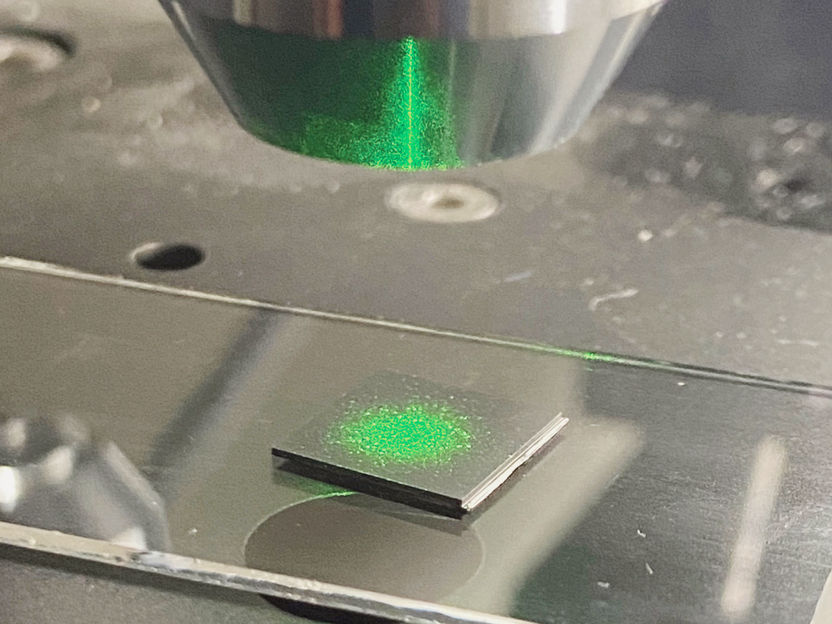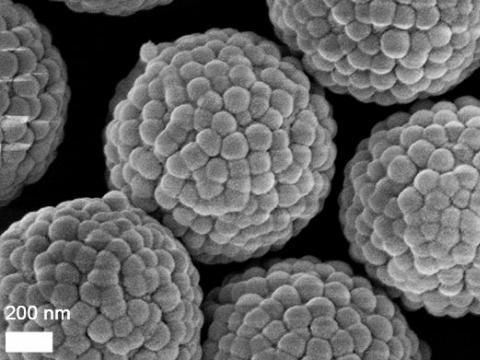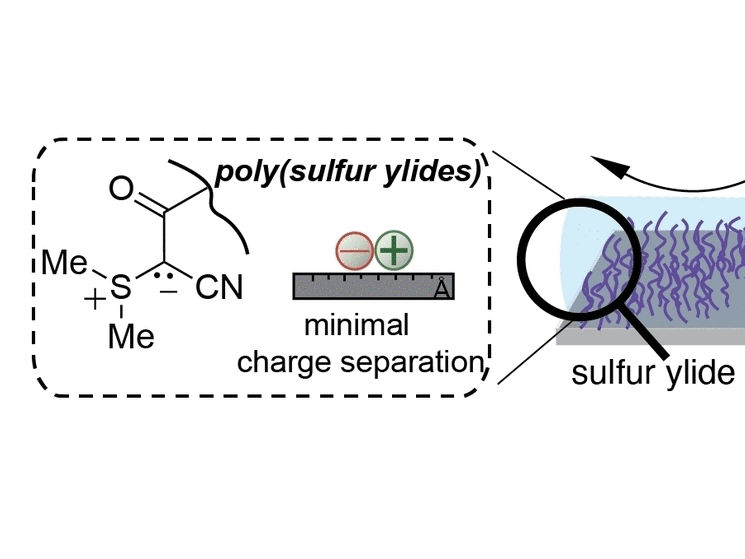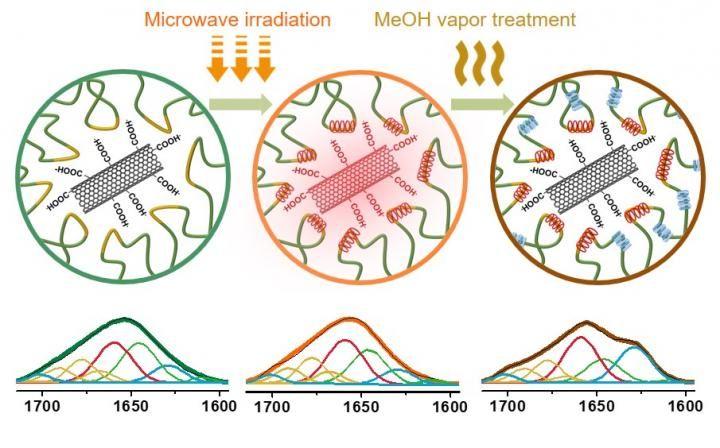Detecting pollutants at ultra-trace levels
Material scientists develop nano-structured and reusable substrate for ultra-sensitive detection of low-concentration analytes - Spin-off planned
Advertisement
Surface-Enhanced Raman Scattering (or Spectroscopy), known as SERS, is an advanced analysis method that extends the range of Raman applications to trace analysis such as part per million level detection of a pollutant in water or different liquids. SERS has a high potential to be used in the fields of biochemistry, forensics, food safety, threat detection, and medical diagnostics. But before the method can be applied at the industrial and clinical level there is still a need for inexpensive and reliable SERS substrates which allows reproducible spectral signals. Material Scientists of Kiel University carried SERS approach to an advanced level by developing a new substrate with plasmonic and photocatalytic nanostructures. It increases the sensitivity, spatial and temporal resolution and leads to 50 times more powerful analysis than classical SERS. Researchers designed this new substrate also reusable which significantly reduces the cost. Their results have been published in the journal Small.

With laser light and the so-called Raman effect, small material samples can be analysed and show whether, for example, traces of pollutants are contained. The substrate plays a decisive role here.
Cenk Aktas / Josiah Shondo
The substrate plays a crucial role
Raman spectroscopy – named after the physicist and Nobel Prize winner Chandrasekhara Venkata Raman – is a method of determining the chemical composition of materials and thus also detecting harmful substances. For this purpose, a material sample is irradiated with a laser. Based on the reflected Raman signal, conclusions can be drawn about the properties of the material. “The substrate plays the most critical role in the performance of this analytic technique, because of interactions with the laser light influence the Raman signal”, explains Josiah Ngenev Shondo. As a doctoral researcher at the Chair for Multicomponent Materials he works on materials to improve the detection and photocatalytic clean-up of pollutants in water.
By combining materials with different properties, the members of the chair have now succeeded in producing a novel substrate for SERS analysis that enhanced the Raman signal by a factor of 50 in comparison to classical SERS. “That’s more than has ever been reported before for this method,” says Professor Oral Cenk Aktas. That enormously increases the sensitivity, spatial, and temporal resolution in the analysis of materials in trace amounts. As a result, even very small amounts of material can now be analysed in a short time. Before and after the material analysis the researchers irradiate the substrate with UV light for activation and clean-up, respectively. “This way the analyte is decomposed and the substrate, which is quite costly, can be re-used several times now. We showed that our substrate can be reused at least twenty times without any loss of its Raman activity," Aktas continues.
This new substrate carries SERS approach to an advanced level
To achieve this the researchers created a novel surface composed of nanocolumnar structures, nanocrack network, nanoscale mixed oxide phases, and nanometallic structures (“4N-in-1”). Such a surface enhances the Raman signal and provides a high detection sensitivity.
“Recently PIERS (Photo Induced Enhanced Raman Spectroscopy), a new extension of SERS method, has been proposed. With their novel PIERS substrate “4N-in-1” the research team contributes to this new approach by combining plasmonic and photocatalysis concepts to achieve high resolution and signal enhancement in SERS analysis. “Our substrate brings various superior properties together on the same substrate. In addition to the plasmonic nanostructures, it is composed of an extremely active titanium dioxide layer," says Dr. Salih Veziroglu. His research on the substrate materials was partly funded with a grant from KiNSIS (Kiel Nano, Surface and Interface Science), a priority research area of Kiel University.
Further plans: Spin-off and combination with AI methods
"This substrate is the result of many years of long-standing experience and various expertise in our chair. Now we want to transfer our findings from fundamental research into an application," says Professor Franz Faupel, head of the chair. Their substrate can easily be combined with any type of Raman spectroscopy, and this may trigger various new applications. To bring their advanced method of Raman spectroscopy to the market, they are looking for other research groups and companies in the area of laboratory and analytical technology. They also plan to combine their method with artificial intelligence (AI) to create a comprehensive data basis for materials analysis. This could enable faster and more precise detection of also individual molecules.
One idea for a concrete application was already investigated by Shondo
in his doctoral thesis, which is about to be completed. In 2018, the materials scientist came to Kiel University with a scholarship from the German Academic Exchange Service (DAAD) to do something about the environmental pollution in his home country of Nigeria. The extraction of the country's large oil deposits contaminates soils, rivers and even drinking water. With the new substrate Shondo and his colleagues have developed, he also sees potential for using it with portable Raman spectroscopy equipment in Nigeria: "Since even small amounts of oil can be detected and even removed, this method could be used at an early stage and prevent worse environmental damage."
Original publication
Other news from the department science
Most read news
More news from our other portals
Something is happening in the chemical industry ...
This is what true pioneering spirit looks like: Plenty of innovative start-ups are bringing fresh ideas, lifeblood and entrepreneurial spirit to change tomorrow's world for the better. Immerse yourself in the world of these young companies and take the opportunity to get in touch with the founders.
See the theme worlds for related content
Topic World Spectroscopy
Investigation with spectroscopy gives us unique insights into the composition and structure of materials. From UV-Vis spectroscopy to infrared and Raman spectroscopy to fluorescence and atomic absorption spectroscopy, spectroscopy offers us a wide range of analytical techniques to precisely characterize substances. Immerse yourself in the fascinating world of spectroscopy!

Topic World Spectroscopy
Investigation with spectroscopy gives us unique insights into the composition and structure of materials. From UV-Vis spectroscopy to infrared and Raman spectroscopy to fluorescence and atomic absorption spectroscopy, spectroscopy offers us a wide range of analytical techniques to precisely characterize substances. Immerse yourself in the fascinating world of spectroscopy!


























































